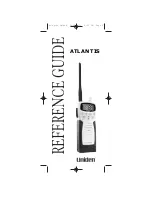
NEO-M9N - Integration manual
During assembly of end-user devices which contain passive patch antennas, an ESD
discharge may occur during production when pre-charged antennas are soldered to the
GNSS receiver board. In such cases, use of external protection in front of RF_IN is mandatory
to avoid device destruction.
ESD discharge cannot be avoided during assembly and / or field use. Note that SAW filters are
susceptible to ESD damage. To provide additional robustness an ESD protection diode may be
placed at the antenna RF connector to GND.
4.9.4 Antenna/RF input
Check RF input requirements and schematic:
• Make sure the antenna is not placed close to noisy parts of the circuitry and does not face any
other noisy elements (for example micro-controller, display).
• ESD protection on the RF input is mandatory.
• Possible external antenna bias-t inductor must be L-band frequency selected with high
impedance in the GNSS band.
• Ensure RF trace is tuned for 50 Ω to ensure proper GNSS bandwidth.
4.9.5 Ground pads
Ensure the ground pads of the module are connected to ground.
If a patch type antenna is used, a sufficient antenna ground plane is required.
4.9.6 Schematic design
For a
minimal design
with the NEO-M9N GNSS modules, consider the following functions and pins:
• Connect the power supply to VCC and V_BCKP.
• V_USB: If USB is used it is recommended V_USB is to be powered as per USB self-powered mode
specification.
• If USB is not used connect V_USB to ground.
• Ensure an optimal ground connection to all ground pins of the NEO-M9N GNSS module.
• Choose the required serial communication interfaces (UART, USB, SPI or I2C) and connect the
appropriate pins to your application.
• If you need hot or warm start in your application, connect a backup battery to V_BCKP.
4.9.7 Layout design-in guideline
• Is the receiver placed away from heat sources?
• Is the receiver placed away from air-cooling sources?
• Is the receiver shielded by a cover/case to prevent the effects of air currents and rapid
environmental temperature changes?
• Is the receiver placed as recommended in the
?
• Assure a low serial resistance on the VCC power supply line (choose a line width > 400 um).
• Keep the power supply line as short as possible.
• Add a ground plane underneath the module to reduce interference. This is especially important
for the RF input line.
• For improved shielding, add as many vias as possible around the micro strip/co-planar
waveguide, around the serial communication lines, underneath the module, etc.
UBX-19014286 - R07
4 Design
Page 84 of 95
C1-Public












































